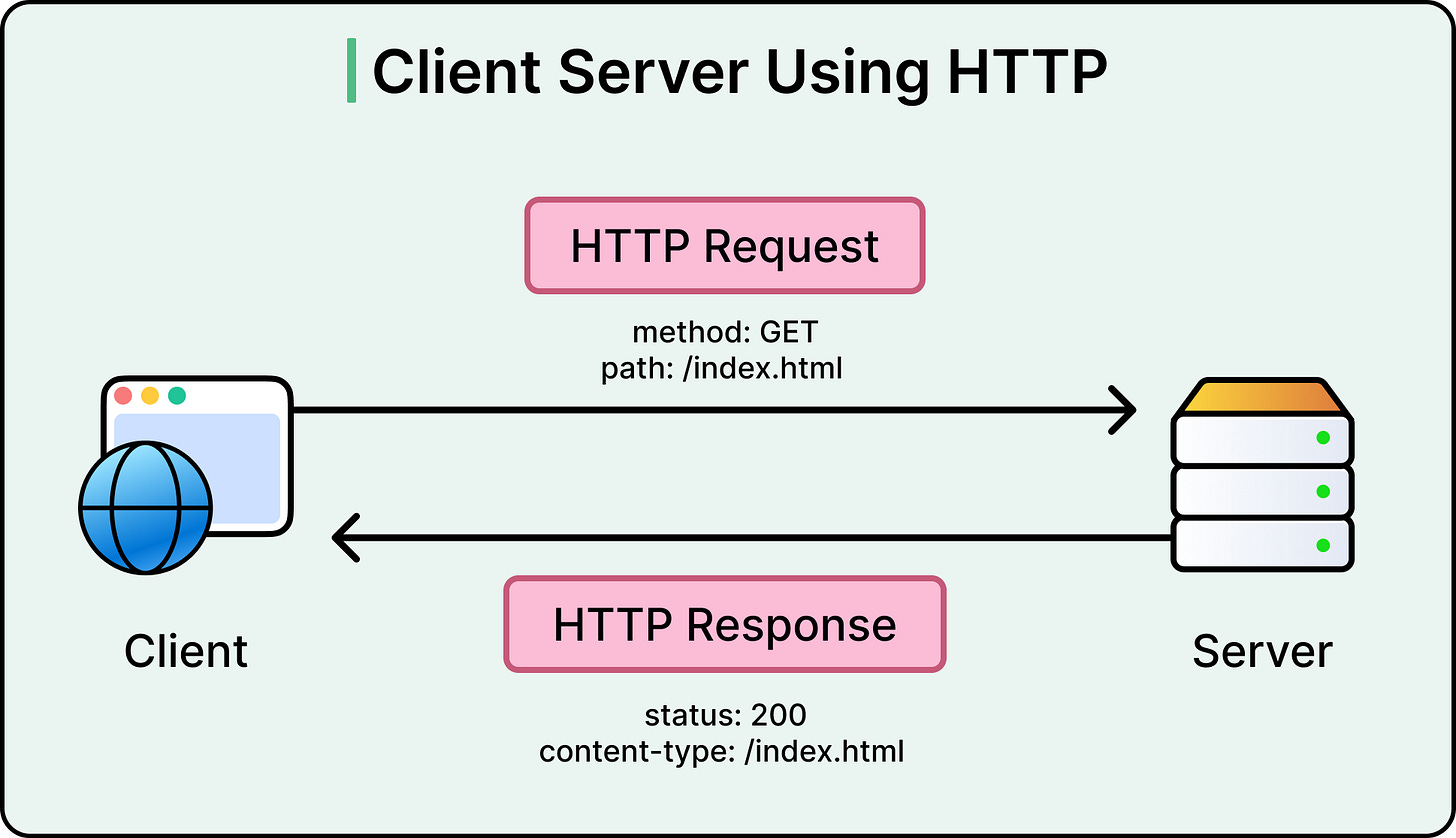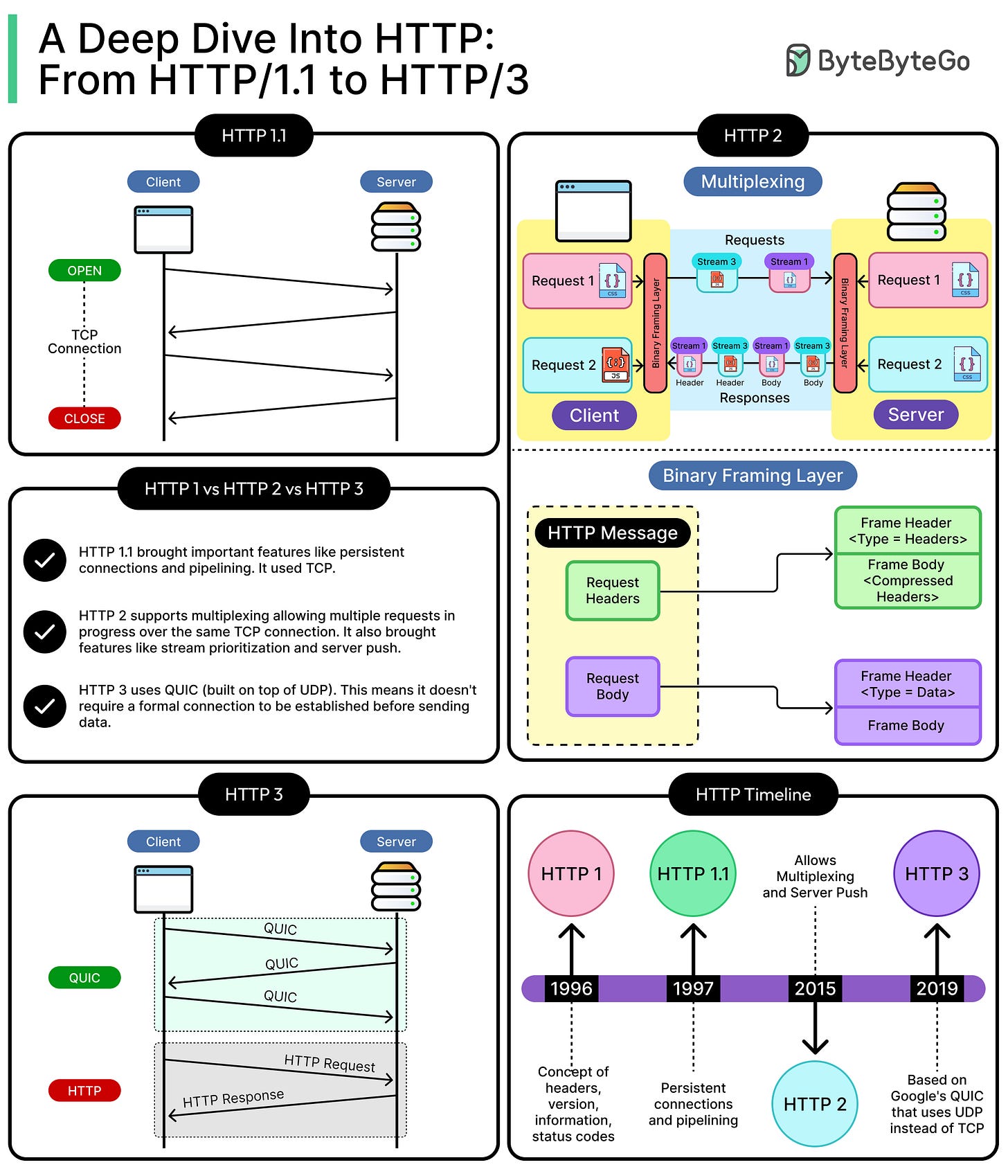A Deep Dive into HTTP: From HTTP 1 to HTTP 3
HTTP is the backbone of modern internet communication, powering everything from browser requests to microservices inside Kubernetes clusters.
Every time a browser loads a page, every time an app fetches an API response, every time a backend service queries another, it’s almost always over HTTP. That’s true even when the underlying transport changes. gRPC, for example, wraps itself around HTTP/2. RESTful APIs, which dominate backend design, are just a convention built on top of HTTP verbs and status codes. CDNs, caches, proxies, and gateways optimize around HTTP behavior.
Understanding HTTP is less about memorizing status codes and more about internalizing the performance trade-offs baked into the protocol’s evolution. HTTP/1.0 opened the door. HTTP/1.1 made it usable at scale. HTTP/2 pushed efficiency by multiplexing streams over a single TCP connection. And HTTP/3, built on QUIC over UDP, finally breaks free from decades-old constraints.
In this article, we trace that journey. From the stateless, text-based simplicity of HTTP/1.1 to the encrypted, multiplexed, and mobile-optimized world of HTTP/3.
Along the way, we’ll look at various important aspects of HTTP:
How does TCP’s design influence HTTP performance, especially in high-latency environments?
Why does head-of-line (HOL) blocking become a problem at high scale?
How do features like header compression, server push, and connection reuse change the performance game?
And where does HTTP/3 shine and still face issues?

